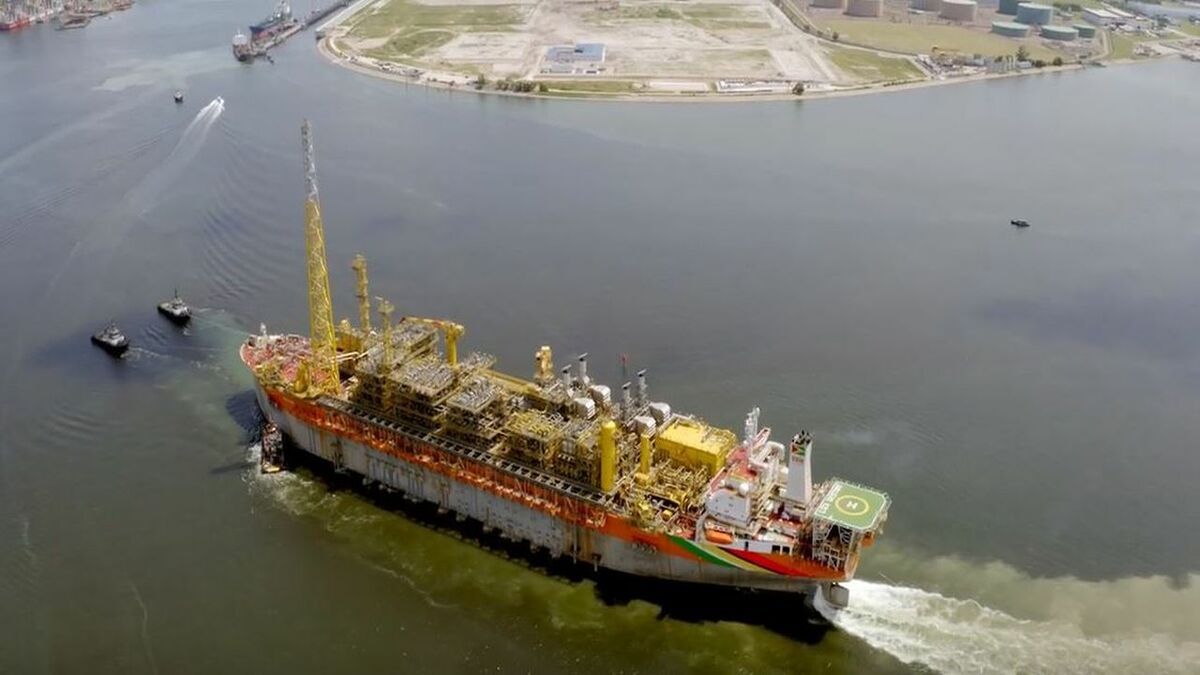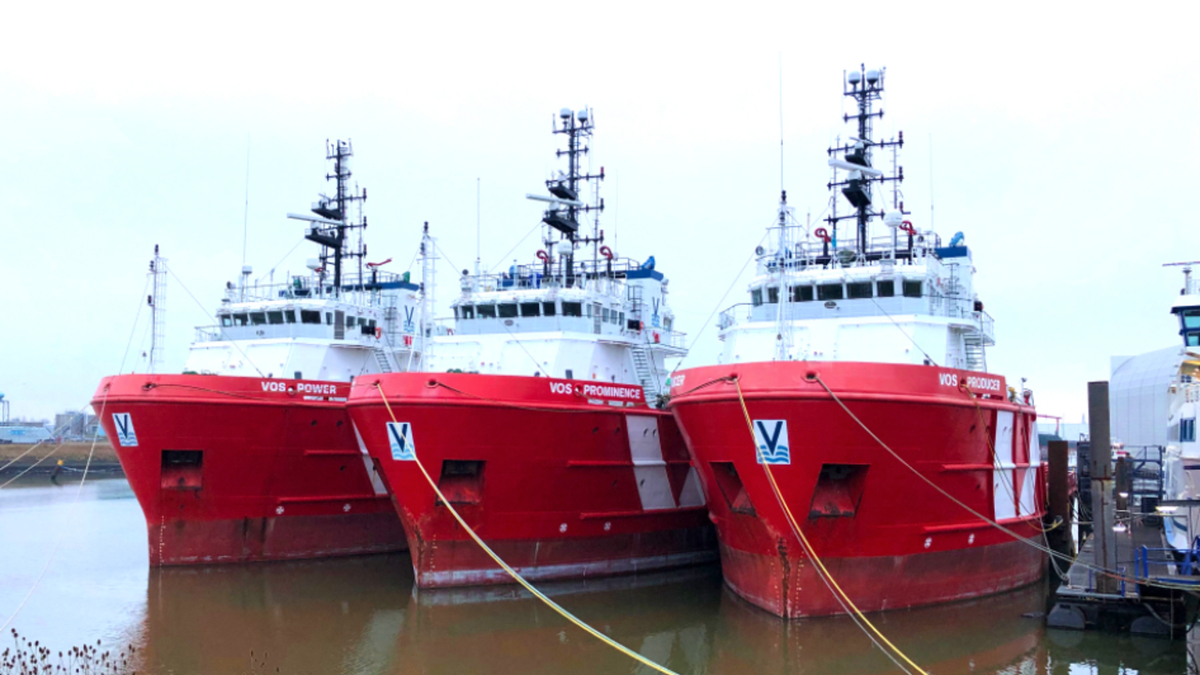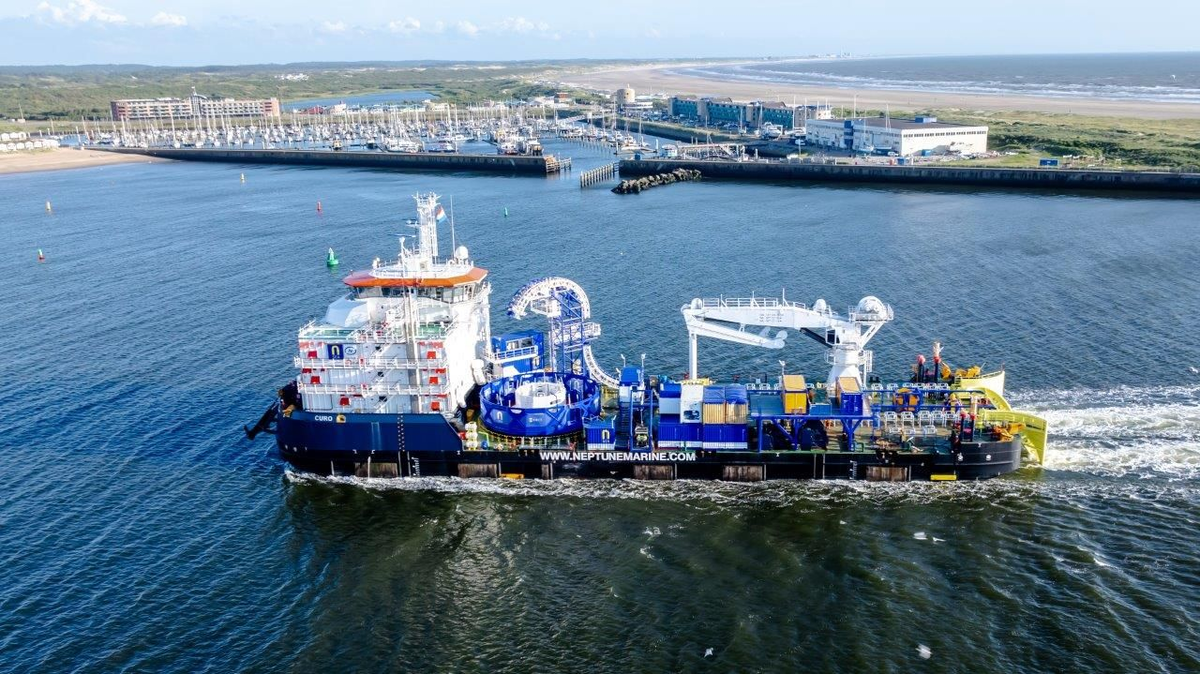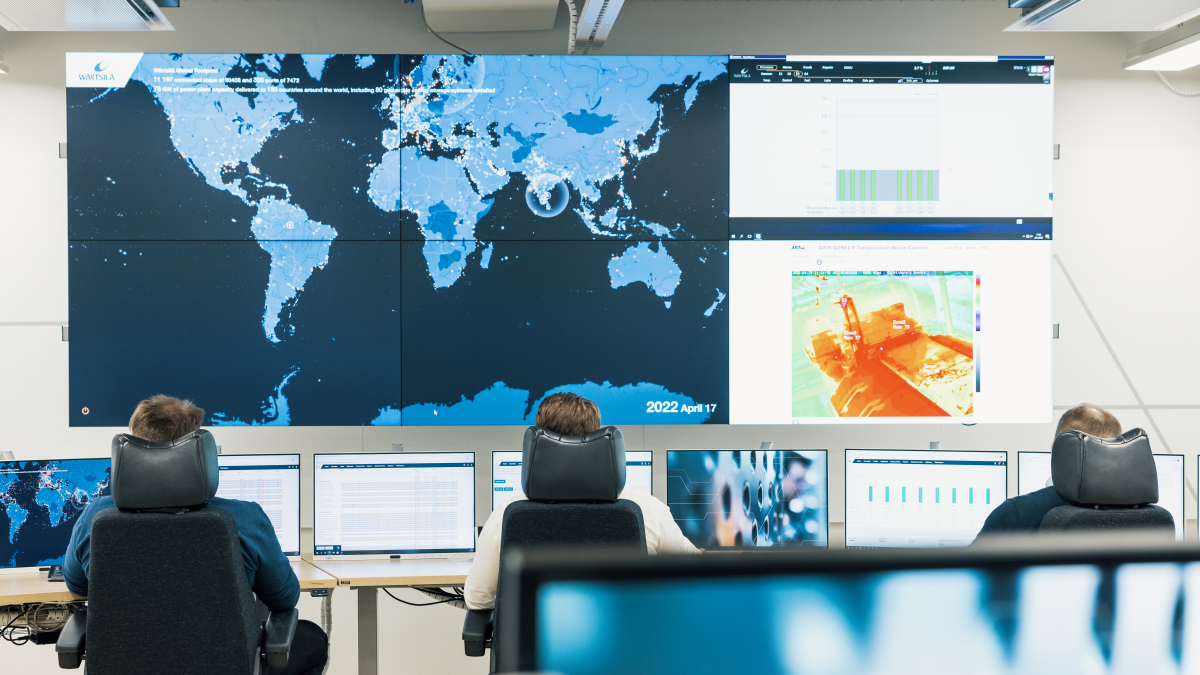Business Sectors
Events
Contents
Register to read more articles.
Editor's choice 2023: start of an OSV supercycle - a year of rising capex, utilisation and day rates
Offshore Support Journal deputy editor Martyn Wingrove reviews the highlights and trends emerging in the offshore support vessel sector in 2023
What a year 2023 has been for owners of offshore support vessels (OSVs), with growing demand for their assets and confidence good times are ahead, but there were still financial, operational and technical challenges to overcome.
From the start of the year, demand for vessels has risen as energy companies ramped up offshore investment, boosting fleet utilisation and charter rates.
Worldwide, offshore energy capex and opex is climbing with new field developments sanctioned, increasing drilling and subsea installations and maintenance.
Rising rates enabled owners to increase their profits and repay debt, but for some it was too late and too challenging, so they had to sell vessels, restructure finances, persuade lenders to become shareholders and join in industry consolidation.
While rates were rising, so were operating costs and pressures on owners to implement energy efficiencies. Oil and gas companies are increasingly interested in reducing their scope 3 emissions through their contractors and putting more impetus on vessel owners to emit less. But there was debate how this would be achieved from existing fleets and whether it would be possible for newbuilds.
Offshore Support Journal reported on all the key corporate deals, refinancing arrangements, technical achievements, development projects, fleet sales and vessel contracts in 2023. Here are the key identified trends from 2023.
Welcome to the new supercycle
Leading vessel owners, brokers and energy analysts agree the offshore industry has entered the next major upcycle in which owners have the upper hand. After years of having to cope with challenging rates and low demand, owners are enjoying the best day rates and utilisation levels they have seen since 2015.
Offshore investment has risen, driven by new developments and construction projects bolstering vessel demand, tightening global capacity and ensuring high utilisation and day rates in the near term.
With no newbuilds on the cards in the next few years, charterers will need to be prepared for the new normal of relaxing mandatory age restrictions in their vessel tenders and can expect to pay higher prices for assets.
In September, Synergy Offshore chief executive, Fazel Fazelbhoy told OSJ market conditions were right for a prolonged upturn that could last to the end of the decade, what he coined the start of a supercycle that could last five or seven years.
Owners are desperately waiting for their legacy contracts to run out so they can refix their vessels at 50% or even higher rates. They are also prepared to mobilise vessels to regions of the highest demand to secure the best rates, leaving energy companies relying on spot markets with vessel shortages and sky-high, short-term prices.

South America/West Africa drive deepwater oil and gas developments
In 2023, increasing numbers of vessels and offshore assets were heading to deepwater hot spots, where energy majors were piling in with higher capital expenditure in large projects incorporating networks of subsea wells and infrastructure connected to floating production storage and offloading (FPSO) ships.
South America is the greatest continent for FPSOs and subsea installations, with Brazil remaining a leading nation for new ultra-deepwater projects, but Guyana has become the new major market for subsea contractors and vessel owners.
There have also been several new developments and offshore projects in West Africa from Senegal to Namibia, with Angola another country investing in offshore capex.
ExxonMobil has the most potential in the smallest area of any company with its multiple FPSO projects in the Stabroek block.
Its list of undeveloped discoveries is significant and plans for FPSOs in the long term mean the US energy major has considerable leverage to secure assets well into this decade. Its latest swoop is contracting Saipem for a fleet of vessels until 2028 for the Whiptail FPSO development.
In the same contract award announcement, Saipem confirmed Equinor had also booked vessel time for the deepwater Raia gas/condensate project. Subsea 7 and TechnipFMC are also securing subsea installation contracts for longer term projects, reducing capacity for energy companies that have not yet made their move. It will soon be too late for some.
Refinancing, consolidation and restructuring
There is a new wave of industry consolidation underway across the offshore sector. Chevron acquired Hess in October to gain a 30% working interest in the deepwater offshore Stabroek block in Guyana, deepwater fields in the Gulf of Mexico and offshore gas assets in southeast Asia. Also in October, ExxonMobil purchased Pioneer Natural Resources to transform its onshore US position.
There were also several corporate and fleet acquisitions in the OSV sector. Owners accumulated mountains of debt in the lean years when energy companies were driving rates down to unprofitable levels and were unforgiving on contract terms.
The upswing in owners’ favour has finally come after seven years of hardship, but for some owners it has come too late as lenders are demanding their pound of flesh.
Companies such as Tidewater, which had restructured early and trimmed the fleet, were on the hunt for expansion and able to pounce on those with unbalanced sheets.
Tidewater swooped for Swire Pacific during 2022, and then the platform supply vessel (PSV) fleet of Solstad Offshore, which had to restructure and refinance its debt with support from new major shareholder, Aker. DOF group also went through the pain of a major restructuring with shareholders the main losers, but coming out with clean balance sheet and prepared for growth again.
There were some major fleet and vessel purchases with OSV sales passing the US$1.5Bn mark by the start of November. Britoil Offshore Services, Golden Energy Offshore Services and Groen Shipping picked up PSVs and anchor handlers from Vroon, which started a new chapter in 2023.
It was a sellers market and vessel values continued climbing, enabling some dynamic owners, such as Standard Supply and DOF to purchase and resell to maximise profits from asset plays.
Commitment to decarbonisation – investment in hybrid/electric and future fuels
OSV owners are working towards reducing emissions and becoming more sustainable in their operations. Some are retrofitting vessels with technologies and engines to lower emissions, while others are considering biofuels and future newbuilding investments.
Owners such as Vallianz Holdings, E-Nav Offshore and Tidewater explained their commitments to decarbonisation during the Offshore Support Journal Conference, Asia, while there were presentations by ADNOC Logistics & Services, Tidewater, Eidesvik Offshore and North Star Shipping at the Offshore Support Journal Conference, Exhibition & Awards in London covering decarbonisation.
In 2023, practical efforts were made to retrofit vessels ready for the new era of emissions reductions. Skansi Offshore is collaborating with Norway-headquartered SEAM to upgrade 2013-built PSV Kongsborg with hybrid propulsion to reduce emissions during transits and dynamic positioning.
Eidesvik Offshore is pioneering the use of zero-emissions technology in Viking Energy. The LNG-battery-hybrid PSV is being converted under a five-year contract awarded in connection with the EU-funded ShipFC project that includes Equinor, Eidesvik and 12 other European partners. The ShipFC project’s goal is to install fuel-cell modules running on green ammonia, with a total power of 2 MW.
While few newbuilds have been ordered on the oil and gas side, operators supporting the booming global offshore wind sector have welcomed delivery of crew transfer vessels (CTVs), service operations vessels (SOVs) and the construction versions (CSOVs) with various decarbonisation schemes.
There were announcements by vessel owners to develop alternative fuels to diesel for SOVs and CSOVs. Østensjø is working with Hydrogenious to commercialise the use of liquid organic hydrogen carriers for vessels supporting offshore windfarms.
In another drive, the Norwegian Shipowners’ Association, along with three major OSV owners, started a study to explore the technical and operational issues around alternative fuel usage in OSVs.
Embracing digitalisation for operational gains
Developments in IT, cyber security, communications, digitalisation and artificial intelligence are enabling OSV owners to enhance their operations, improve safety and analyse operational data more effectively.
Riviera Maritime Media was at the forefront of enabling debate between owners and stakeholders to enhance the use these technologies to positively impact the OSV sector. Vessel owners, operators and managers from around the globe debated the latest issues and solutions for improving connectivity and implementing during a breakfast roundtable before Riviera Maritime Media’s Offshore Support Journal Conference, Asia in September.
Representatives at the Inmarsat-hosted event came from companies such as Anglo-Eastern Shipmanagement, Britoil, Caterpillar Marine, E-Nav Offshore, MMA Offshore, M3 Marine, OSM Thome, Synergy Offshore, Tidewater Offshore Operations, Vallianz Holdings and Vroon.
Top executives discussed the way vessel owners are leveraging satellite connectivity to improve profitability and drive sustainability in the offshore sector. Several emphasised the increasing importance of real-time data as a source for greater vessel efficiency and its potential to generate new business opportunities based on those gains.
Outside of this roundtable discussion, owners are using these technologies to develop new solutions to operational challenges.
P&O Maritime Logistics has created an AI Safety Assistant powered by ChatGPT to support team members in HSSEQ administration. AISA provides crew and shore managers with answers to a range of questions, makes suggestions for further reading and has become a safety assistant to those on board.
Key trends, challenges and solutions in the OSV sector will be debated and presented during Riviera Maritime Media’s Offshore Support Journal Conference, Awards and Exhibition 2024, which will be held in London, 7-8 February 2024, click here to purchase tickets and attend this industry-leading event
Related to this Story
Women in Maritime Today: Elin Saltkjel says no day working in maritime is dull
Events
Maritime Environmental Protection Webinar Week
Cyber & Vessel Security Webinar Week
The illusion of safety: what we're getting wrong about crews, tech, and fatigue
Responsible Ship Recycling Forum 2025
© 2024 Riviera Maritime Media Ltd.















